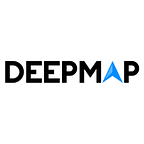Your Data, Your Map
Authored by Wei Luo, COO and Head of Product
For centuries, the art of map-making and science of navigation is a strong measurement of civilization advancement. Without the pioneer map-makers, we humans would have been still sitting on our imaginary flat earth, watching the sun and stars orbiting around us.
At one point, I had been fortunate to work with some of the rarest historic maps from the renowned map collector David Rumsey. I was mesmerized by the early maps that weaved science and imagination into amazing art pieces. Today, we use digital maps everyday to help us get to work and through traffic. Visiting new places is less intimidating because we can count on digital maps to find interesting places to visit. Maps have become the water and air for us in the digital age.
Now let’s look at how maps have been made for the digital age. A fleet of survey cars, such as Google Streetview cars, traverse the streets and capture a lot of data. You might have also seen similar survey cars from large map companies. Map databases are made from the survey fleet data and then handed over to their customers. Google Maps were built this way. So are the navigational maps in your car. To keep the maps updated, survey cars need to drive periodically to capture the changes in the road. It may take months or over a year to revisit an area. In the meantime, the map data becomes stale.
Additionally, many obstacles remain as one take the map databases to build a functional map product. The process is highly complex when multiple sources of data need to be merged. Quality of the map data needs to be verified. The map update process is long, complex and error-prone.
Fortunately, humans are smart and can work around problems in maps. Self-driving cars however, are robots who need precise and up-to-date maps to understand and navigate the world.
There are three critical challenges of map making for self-driving cars:
- Maps need to be very precise (centimeter level precision). They are often called High Definition (HD) maps for this reason. They also need to be fresh to reflect changes on the roads.
- Maps need to work seamlessly with the rest of self-driving system with high performance. Localization, which is the process of using a map to pinpoint the position of a car in 3D space, needs to be accurate, fast and robust.
- There needs to be a new type of software infrastructure that can not only handle massive amount of HD map data, but be super efficient in handling the communications between cars and the cloud while maintaining a low cost.
These challenges call for a new paradigm for mapping for self-driving. This is what DeepMap aims to do — provide a full-stack mapping service that can solve all three challenges with a holistic approach.
Rather than using survey fleets, we believe HD maps need to be made by self-driving cars and for self-driving cars. We believe “Your Data, Your Map” is the new paradigm, creating a virtuous cycle of map creation and updates. Self-driving cars are map creators and map consumers simultaneously.
We believe HD map consumption by self-driving cars, including real-time localization, needs to be part of the mapping service. We believe robust, redundant localization is critical for the safety of self-driving cars. We designed our system to handle sensor failures and challenging environmental conditions.
Lastly, we believe HD mapping is not about mapping at the end. It is about providing the most scalable and intelligent infrastructure that allows millions of cars to be coordinated. Every car is the eyes and ears of other cars. The cloud intelligence not only keeps the maps fresh and high quality, it assists cars on the road to make the best and safest navigation decisions.
There are millions of roads to be mapped. We are only at the beginning. DeepMap aims to accelerate self-driving cars into reality.
